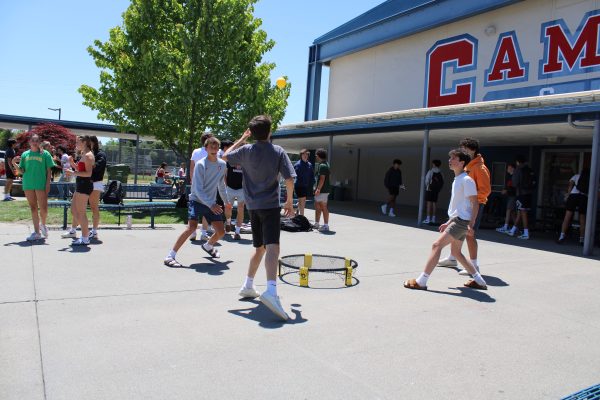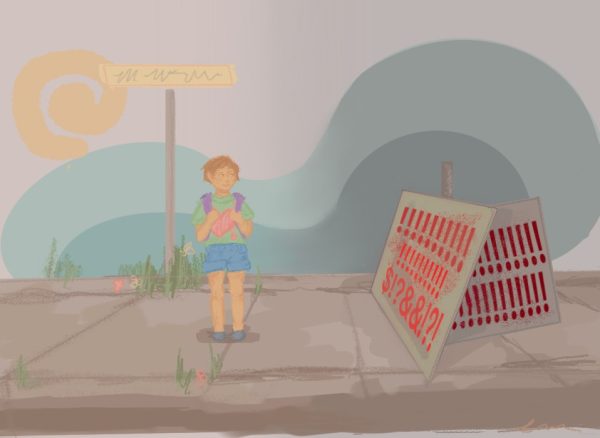Threaded Courses Pilot Take-Home Tech Program
October 13, 2014
Devices such as iPads and Chromebooks have been loaned to selected students in order to enhance their educational experience as part of the district’s new 1:1 program.
Technology director Jamie Corum praised the program as an “amazing tool.” She refers to it as “a movement in education, a general response to a technologically driven society.” She believes that utilizing different tools and assets to deliver education allows the ability for instant collaboration and delivery of the curriculum. “If you’re involved in education, you have to be open and creative in its delivery,” Corum said. According to Corum, 1:1 is adaptive enough to suit the rapidly changing technology movement.
According to Corum, Campo has been more of a “cart-model” campus while the rest of the district has been testing out 1:1. The administration decided to implement the program on a small scale, beginning with two sets of threaded courses. “We wanted to try it out here but not just go full-campus; we wanted to see where it would be effective and where we would get the most impact into education,” Corum said.
A set of junior English and social studies classes are using Chromebooks, and a set of freshman math and science classes are using iPads. Corum explained, “It’s a more controlled environment where the device can be used more effectively than just issuing them out to everybody.”
Campolindo began the program at the appropriate time, “right on target” according to Corum. Designing a solid plan for usage and finding a reasonable price for the equipment was difficult for the school. “They’re expensive, or can be, depending on funding,” added Corum.
Biology teacher Jay Chugh said, “We have to take a look at a lot of different models. We can’t afford to buy everyone an iPad.” He added, “It’s not necessarily a cheap program, but you can get tremendous return on your investment.”
Math teacher Bill Doherty appreciates the advantages 1:1 gives him, such as sharing his freshman geometry students with Chugh. “We can do things like play with the bell schedule, and all of our students have the iPads so we know that we can do a lot of things.” Doherty continued,”The iPad was engineered to be a more personal device, not something you stick in a cart, use for an hour, and give to the next person.”
Doherty enjoys the variety of resources now at his disposal. “It makes more kinds of activities available for us to use in the classroom because we know that, just like [we know] the student’s going to have their textbook with them, we know they’re going to have their iPad with them and we don’t have to go out of the way to make that work,” he said.
Doherty enjoys the program and the ease and opportunity that accompany it. “It’s breaking down some of the barriers we had before, like when math and science were just paper and pencil; it’s making it more real for the students,” he said.
“It definitely gives students a more hands-on approach,” agreed Corum. She emphasized that it “gives students the tools, such as encyclopedias and online libraries, that normally would take time out of the class to look up, but the information’s at your fingertips.” This convenience, she continues, “allows for more student-teacher interaction.”
Some applications students have used in Doherty’s geometry class include ExitTicket, to assess math knowledge and gain media feedback. The program suits visual and auditory learner as students are able to watch video lessons and other material that supplements the curriculum. Doherty likens it to “watching the lecture again, on their device.”
Chugh believes that to learn, one must experience many different forms of media. He said, “The brain research shows that learning things visually and through multimedia [is beneficial]. Almost half our neurons are wired for learning visually.” For example, he mentioned Bloom’s Taxonomy, an educational organization system which states that creation is supreme in order to comprehend material.
“The highest level of learning is when you create, and the iPad is a creative device. I do believe it will translate into better performance not only on tests but also understanding how labs work and other things that are harder to measure: not just multiple choice but the more important measurements of speaking and listening, the common core skills,” he said.
Corum said that the program is too new to assess whether test scores have increased.
Freshmen Jelina Liu and Lauren Rodriguez find the devices engaging and beneficial. Said Rodriguez, “There are a lot of educational apps out there and they get automatically downloaded onto the iPad so [that] can really help with learning and remembering new information or practicing concepts.”
Liu added that “it makes learning a lot more fun.”
Rodriguez said, “There’s an app called GeoGebra and it helps you construct angles or shapes.” Additionally, students are encouraged to use the multitude of tools to study for other classes.
According to Liu, teachers can monitor students’ usage to prevent students from using the devices for non-educational purposes. Rodriguez approves of this at home, but not when it disrupts the learning in the classroom. “I don’t think it’s really any different than you being issued a scratch paper in class for a test and doodling on the corner if you finish your test,” said Corum, describing the situation. “That scratch paper was still utilized for education.”
Corum said that technological hiccups are to be expected, especially because the whole campus has recently undergone a minor tech reform. “Technology evolves at this exponential rate; the demands of implementation and how to bring [the iPads] into the classroom grows faster than the ability to keep up with the technology itself.” However, according to Chugh and Doherty, the devices have been successfully integrated.
The alternative to 1:1 remains BYOD (bring your own device), which students may prefer. “BYOD seems to be a potential contender. It allows you to bring a device you’re more comfortable with which eases the transition,” said Corum. She believes that because students respond to different educational techniques and learning styles, the same goes for devices.
Nevertheless, the 1:1 program is a technological option that unites compatible instruments with a unique and personalized set of tools. “We’ve had really positive feedback,” said Corum.


